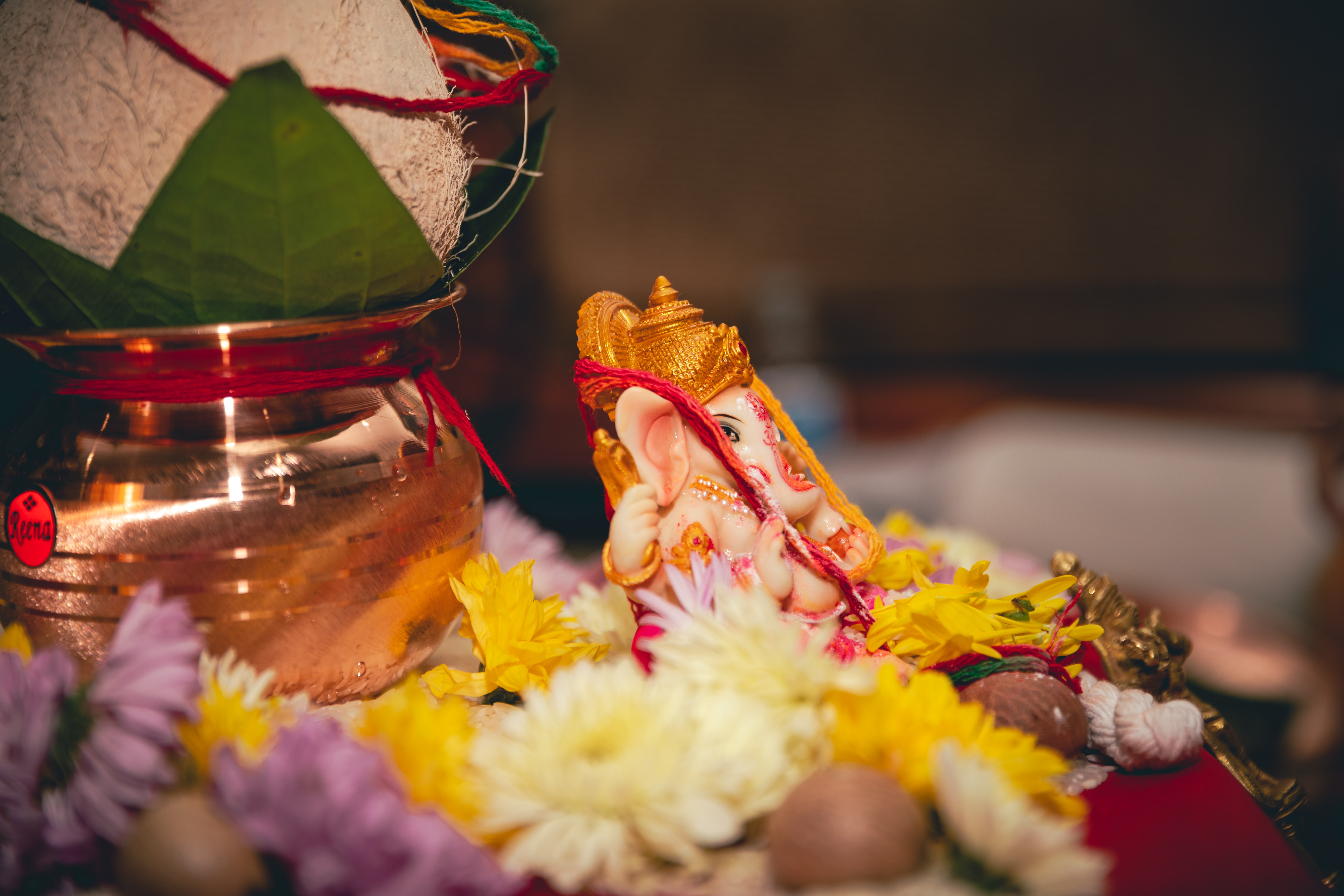Ganesha Chaturthi is the biggest Hindu festival of Goa. It is a ten-day celebration to honor Lord Ganesha on his birthday. After the Maratha chieftain, Shivaji, it was Lokmanya Tilak who made this festival a public celebration to destroy the caste system and create religious harmony. People from all religions enjoy the festivities.
How Lord Ganesha was born
According to mythology, Goddess Parvati created him from turmeric. She made him stand guard outside the room before going for a bath and told him not to let anyone enter. Shiva came there then and tried to enter his home. Ganesha refused. After a fight, Shiva cut off Ganesha’s head. On seeing this, Parvati became furious. Shiva promised to restore Ganesha to life. He sent his followers to find the head, and they brought the head of a calf elephant. This was placed on Ganesha’s shoulders after which he breathed life into him and revived him.
Must Read: Snapshot on Ultra-Modern Delhi and Aesthetic Pune – by Riya Gulati
Significance of Ganesha Chaturthi
Ganesha Chaturthi celebrates the birthday of Lord Ganesha. The festival is also called Vinayaka Chaturthi and Ganeshotsav. It is celebrated on the fourth day of the bright half of Bhadrapad (August/ September). Ganesha Chaturthi was celebrated in Goa before the Kadamba era. During the Portuguese rule, at the time of the Inquisition, all Hindu festivals were banned. However, Goan Hindus celebrated the festival in their homes. Ganesha is always depicted with a plate of Modaks by his feet. He has a lotus in his hand, and his vehicle, a rat, by his side.
Calangute Beach Goa: Top Attractions, Things to Do, and Best Time to Visit
Ganesh Festival in Goa
Ganesha Chaturthi is celebrated on a lavish scale in Goa. Families often come from abroad to celebrate the festival with their close relatives. Preparations begin months in advance. Firstly, a clay statue will be purchased and ceremonially installed. A room in the house is then decorated by putting a matoli (wooden canopy) adorned with flowers, vegetables, and fruits. Then the God is brought home and kept on an altar. The room will be lit up with fairy lights as well. The home celebrations will end with the immersion of the idol after 1½, 5, 7, 9, or 11 days. The height of the idol could range from ¾ inch to 70 feet (for large celebrations). Women prepare Modaks (a dumpling-like sweet stuffed with a mixture of coconut and jaggery, laddoos, Nevri (also made with coconut), barfi and besan (gram flour) ladoos, as well as some traditional savory dishes.
Read more: Top things to do in India
Those living in cities visit their ancestral homes to celebrate with their relatives and friends. They perform poojas and sing hymns accompanied by Gumot (a percussion instrument made using clay with and monitor lizard skin on both sides) and taal (cymbals). This was before the monitor lizard was declared as an endangered species. Rexene is now used as a substitute and taal (cymbals). Some make rangolis (decorative drawings made with colored rice powder, flour, or flower petals) at the entrance of the house or in the courtyard. Hindu families invite their friends to the celebrations. There might be fireworks too.
The festival has four main rituals. Pranapratishhtha, in which the deity is infused into the murti or clay idol. Shhodashopachara, or 16 forms of paying tribute to Lord Ganesha. Uttarpooja, a pooja after which the idol will be shifted after the infusion. Ganapati Visarjan, which is the immersion of the idol in a water body.
Must Read: Tips to Celebrate Ganesha Chaturthi in an Eco-Friendly Way
Things to see during Ganesha Chaturthi in Goa
Huge idols can be seen in prominent areas. This is called Sarvajanik Ganeshotsav. People can buy lucky tickets and try their chances on a lucky draw, which may include prizes like a car or washing machine. There will be many competitions for best rangoli, best decorated Ganesh, and fancy dress. Another attraction is the sound and light show depicting Hindu Gods. On the last day, people gather together to bid Lord Ganesh an emotional farewell. Aartis are performed before the immersion. Large processions make their way to the beach or riverfront for the immersion. The deity will be placed in a truck, music will be played, and people dance, while some burst crackers. Once the immersion is over, prasad and fruits will be distributed.

Your article contains really great and helpful info. Im very satisfied that you simply shared this helpful information with us. Please keep us up to date when you create new blog. If you have some spare time, me very happy if you could skim through my blog on car history report, thank you! Have you considered promoting your blog?